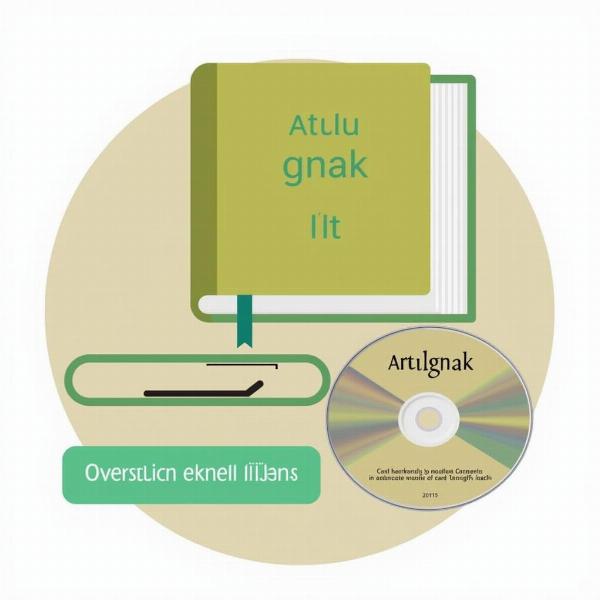Understanding the meaning of “accompaniment” in Hindi is crucial for accurate translation and effective communication. Whether you’re dealing with musical contexts, culinary pairings, or simply referring to something that goes along with something else, this article will delve into the various nuances of “accompaniment” and its Hindi equivalents. We’ll explore common usages, cultural contexts, and provide practical examples to solidify your understanding.
Exploring the Different Facets of “Accompaniment” in Hindi
“Accompaniment” can be translated in several ways in Hindi, depending on the specific context. The most common translations include साथ (sath), संगत (sangat), and सहयोग (sahayog). Let’s break down each term and explore their subtle differences.
-
साथ (sath): This is the most general term for accompaniment and often translates to “with” or “together.” It’s used in a wide range of situations, from describing people accompanying each other to objects being paired together. For example, “I went to the market with my friend” would be “मैं अपने दोस्त के साथ बाजार गया” (Main apne dost ke sath bazaar gaya).
-
संगत (sangat): This term carries a connotation of harmony or compatibility. It’s often used in musical contexts, referring to the instrumental accompaniment to a vocal performance. It can also be used more broadly to describe things that complement each other well. For instance, “The wine was a perfect accompaniment to the meal” could be translated as “वाइन भोजन के लिए एकदम सही संगत थी” (Wine bhojan ke liye ekdam sahi sangat thi).
-
सहयोग (sahayog): This word implies support or assistance and is often used in the context of collaborative work. While not a direct translation of “accompaniment,” it can be used when referring to something that aids or enhances something else.
Accompaniment in Culinary Contexts
In Indian cuisine, the concept of accompaniment is deeply ingrained. Chutneys, pickles, raitas, and breads are all considered accompaniments to the main dishes, enhancing the overall dining experience. The Hindi word सहयोगी (sahayogi), meaning “supportive” or “auxiliary,” can also be used in this context.
Accompaniment in Music: A Deeper Dive
Indian classical music places great emphasis on accompaniment. The tabla, harmonium, and tanpura are frequently used to provide rhythmic and melodic support to vocalists and instrumentalists. The concept of संगत (sangat) is paramount, ensuring that the accompaniment enhances the main melody without overpowering it. Understanding the interplay between the main performance and the accompaniment is crucial to appreciating the beauty of Indian classical music.
“Accompaniment Meaning in Hindi”: Answering Your Questions
What if you’re looking for a more literal translation of “accompaniment” in a non-specific context? You could use अनुरक्षण (anurakshan), which means “escort” or “accompanying.” However, this term is less commonly used in everyday conversation.
Accompaniment in Everyday Language
How would you use “accompaniment” in a simple sentence like “The book came with a CD as an accompaniment”? You could say “किताब के साथ एक सीडी अनुलग्नक के रूप में आई” (Kitaab ke sath ek CD anulgnak ke roop mein aayi), where अनुलग्नक (anulgnak) means “attachment” or “supplement.”
 Book with CD Accompaniment
Book with CD Accompaniment
Conclusion
Understanding the various Hindi translations of “accompaniment” allows for precise and nuanced communication. Whether you’re discussing music, food, or everyday objects, choosing the right word will ensure your message is clear and culturally appropriate. Remember to consider the context and choose the term that best reflects the specific meaning you wish to convey. By mastering these subtle differences, you’ll gain a deeper appreciation for the richness and complexity of the Hindi language.
FAQ
- What is the most common Hindi word for “accompaniment”? साथ (sath) is the most common and versatile word for “accompaniment.”
- What word is used for musical accompaniment in Hindi? संगत (sangat) is often used for musical accompaniment, emphasizing harmony and compatibility.
- How do you say “accompaniment” in Hindi for food? सहयोगी (sahayogi) or संगत (sangat) can be used for food accompaniments.
- Is there a formal word for “accompaniment” in Hindi? अनुरक्षण (anurakshan) can be used as a more formal term, though it is less common in everyday speech.
- What if I’m talking about an accompaniment to a book? अनुलग्नक (anulgnak) can be used to refer to an accompaniment that is an attachment or supplement, such as a CD with a book.
Meaning-Hindi.in: Your Partner for Accurate Hindi Translations
Meaning-Hindi.in offers professional translation services between Hindi and various other languages. Our expertise covers diverse fields, including business, legal, technical, website localization, educational, and specialized translations. We pride ourselves on delivering accurate, culturally sensitive, and high-quality translations that meet your specific needs. Whether you need to translate business documents, legal contracts, or educational materials, our team of expert translators is here to assist you. Contact us today for a free quote at [email protected] or call us at +91 11-4502-7584. Meaning-Hindi.in is your trusted partner for all your Hindi translation needs.